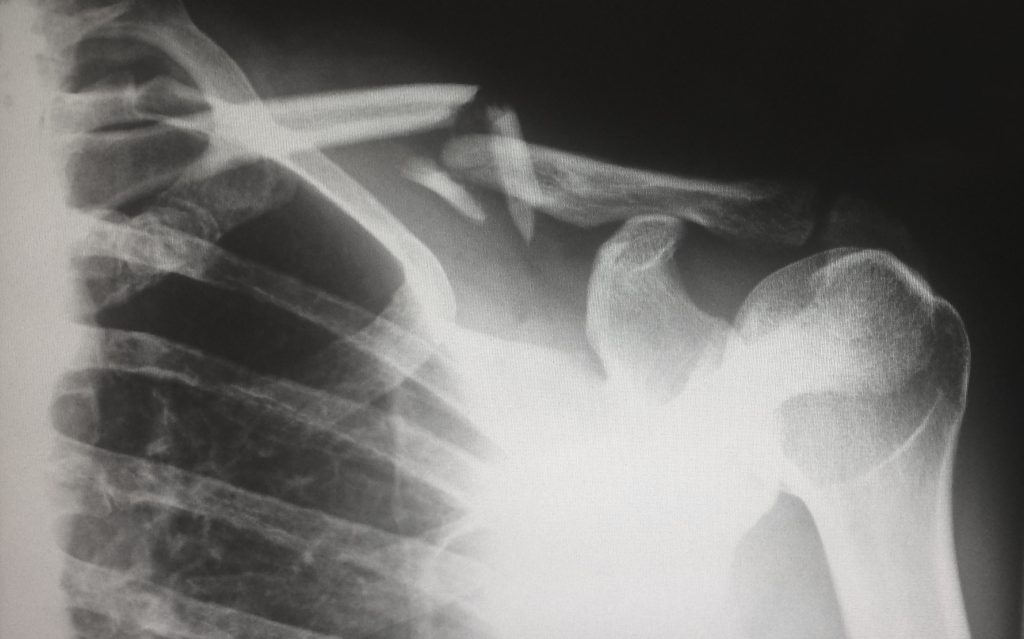Osteoporosis: Causes, Symptoms and Treatment

Osteoporosis is a condition that occurs when bone density decreases and bones become more porous, therefore weaker and brittle. With less bone mass present, bones become more prone to breaking. Bone density begins to decrease after a person hits 35 years old.
Bone Basics
Our bones are made up primarily of collagen, along with calcium and protein to give it strength. The combination of hard mineral (calcium) and soft protein (collagen) allows the bone to be flexible but strong enough to handle stress. The bones and teeth contain more than 99 percent of the body’s calcium. The blood contains the other one percent. Two types of bone exist in the body. Cortical bone forms the outer layer and is more dense. The trabecular bone is the spongy structure that makes up the inner layer of the bone. Remodeling is the process in which bone is renewed many times throughout life. Resorption and formation are the two stages of remodeling. During resorption, osteoclasts break down and dispose of old, weaker bone tissue. Then, osteoblasts replace the old tissue with new tissue during formation.
Symptoms of Osteoporosis
In most cases, you won’t know you have osteoporosis until it causes your bones to break or fracture. Obviously, a break will cause pain. Fractures of the spine can cause pain to radiate throughout the entire body, from the sides and back. Repeated spinal fractures can even cause the spine to curve and a collapse of the vertebrae. This can result in a hunched-back appearance also known as a “dowager hump.” Stress fractures occur during everyday activity, such as walking. Hip fractures are common with osteoporosis, and normally occur after a slip and fall. Almost 30 percent of seniors who have suffered a hip fracture will need long-term care. Bed rest is common after a hip fracture, and can lead to blood clots that can travel to the lungs and result in a pulmonary embolism. Suffering one fracture increases the likelihood of suffering another.
Risk Factors
Two X Chromosomes: Women experience bone loss more rapidly, especially after menopause.
Race: Caucasians and Asians are more at risk for developing the condition.
Genetics: Having a family history of osteoporosis doubles your risk.
Lack of Exercise: Lower levels of physical activity can make you more susceptible.
Nutrition: Low calcium levels, poor overall diet, and chronic inflammation
Certain Medications: Some medications, such as heparin (a blood thinner), medications for seizures, and some corticosteroids can cause osteoporosis.
Testing and Treatment
Routine X-rays can reveal signs of osteoporosis, but only after at least 30 percent of bone mass has been lost. A special type of X-ray, a dual-energy X-ray absorptiometry scan (DXA), can detect the condition by checking bone density. Osteoporosis is defined as a bone density T score of -2.5 or under. A T score between -1 and -2.5 indicates osteopenia, which occurs when new bone is not replacing old bone fast enough. Osteopenia can progress into osteoporosis. The National Osteoporosis Foundation recommends that all women over 65 and all postmenopausal women under 65 who have some risk factors should consider DXA testing. Treatment for this condition includes preventing fractures by reducing bone loss and increasing bone density. This can be done by lifestyle changes, such as quitting smoking, and medications. Early detection is key!
Adults over 65, especially women, are at risk for developing osteoporosis. Know the risk factors, and make sure your healthcare plan will cover the costs of this condition.
Got Medicare Questions?
We hope that this information on osteoporosis is useful to you.
Let us help you answer your questions so that you can get back to the activities that you enjoy the most.
Call (888) 446-9157, click here to get an INSTANT QUOTE, or leave a comment below!
See our other websites:

